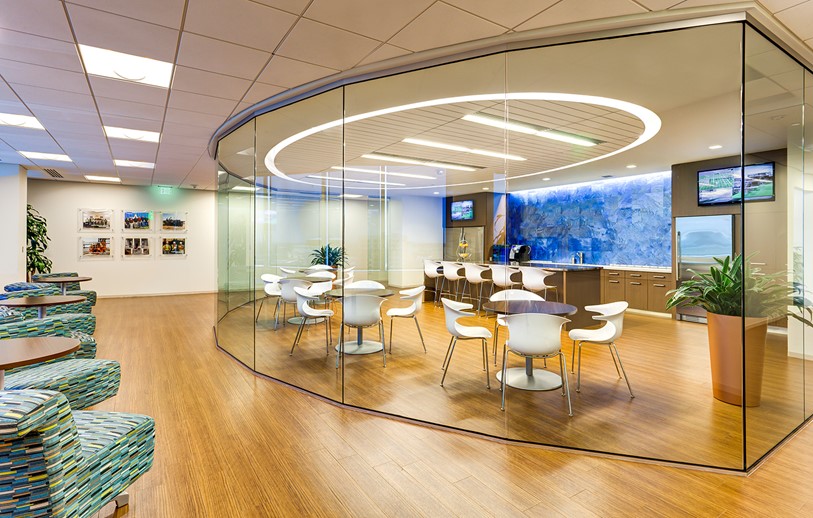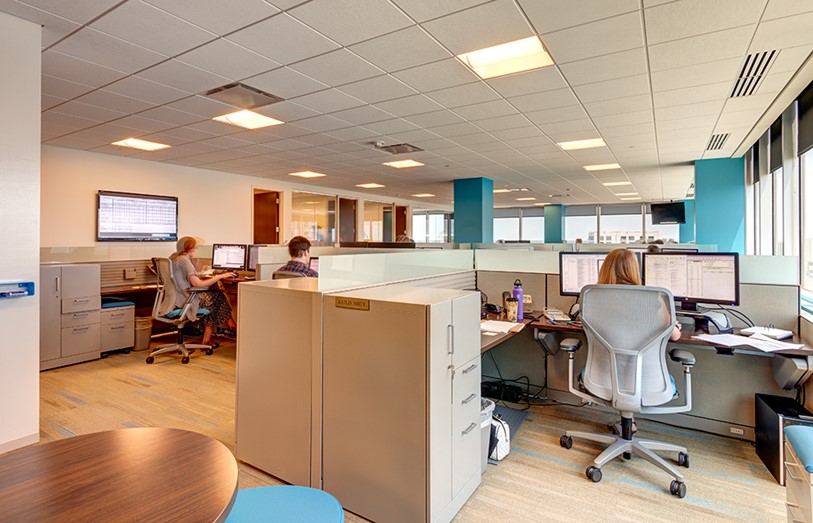The New Workplace
Wellness and the Pursuit of Worker Safety can Co-exist
The office, as we know it, is ripe for upheaval. While companies are reevaluating the role of the office after a long period of remote working, it's important to be mindful of whether we might be risking wellness in the name of safety. In an eagerness to return to some semblance of our pre-pandemic ways, designers and business leaders need to pause and ask: are our considered changes a reflection of our knowledge of this virus or our fear?
Sheltering in place has accelerated the trend toward working from home and has proven its widespread viability. It has refined the role of management from overseeing work production, to valuing the work product – sowing mentorship, trust and confidence. The inherent flexibility and autonomy of remote work has shown psychological benefits for workers. It has triggered reductions in carbon emissions and practically eliminated traffic congestion and parking supply issues. By changing the way we work we have shown that we can be leaders in creating a more sustainable environment.
But the need for the office still exists. The office, more than just a place to do work, has become the physical manifestation of the company "why"—a place where organizations reflect and convey their purpose. The shared work environment of a company’s office is a vessel that helps define and reinforce the values, mission, vision, brand, and culture of the organization, while also supporting the human needs that motivate us to work better: autonomy, achievement, esteem, affiliation, and purpose. The personal, physical, and emotional engagements that happen in an office create deeper connections that embody the company vision and its community.
If the "new" workplace includes more remote working, how do we instill these qualities of the physical office for remote workers? As workers have adapted to new environments and increasingly relied on technology, the interpersonal connections that are initiated in the shared office become even more important in communicating and expressing the organizational brand.
How can companies ensure that an employee's remote work environment supports them to do their best work in the redefined concept of the office? Office designs are increasingly focused on wellness as an important and necessary investment. With the increase of remote work environments, strategies that are implemented in the office to facilitate wellness should be duplicated in remote locations. Design and furnishing elements, including ergonomic furniture, biophillic design concepts, natural lighting and electronic lighting supporting circadian rhythms are things to be considered as we extend wellness goals outside of the shared office.
Some Thoughts for a Human-centered COVID Response to the Shared Office
As companies begin to bring workers back into the office, knee-jerk reactions to OSHA’s guidelines have resulted in more than calls for social distancing. Before installing more partitions and plexiglass shields, we need to reconsider what we know about the virus and fully survey the technological and operational tactics and tools available.
We know that the virus can stay on surfaces from between four hours (copper) and up to three days (plastic and stainless steel). Is adding more surfaces really the best solution to this challenge? We know that the virus lingers in the air for three hours; that face masks—if worn by everyone—greatly diminishes virus transmission rates. And that, even with face masks, we still need to stay at least six feet from each other.

Evidence shows the transmission of viruses is greatest with physical contact. Minimizing that contact becomes a key strategy in the reduction of the spread of the virus. The location and design of entry and receiving for staff, visitors, and deliveries need to be considered carefully. Entry vestibules, allowing for decontamination zones, are possibilities for building lobbies. Some flooring material in entries and corridors can help remove contaminants on shoes. Careful consideration in cleaning processes and anti-virus technologies along with a new focus on the use of antimicrobial materials that minimize the chance of virus growth will go a long way toward providing the psychological safety that workers will need to feel ready to return to the office.
Technology will also play a significant role in the re-imagining of the workplace. Body temperature scanners discourage sick staffers from coming to work and detect the ones that do. Perhaps now is the time to invest in more robust HVAC and building systems that provide cleaner air and better circulation. Smart electronic locker systems are trending as amenities in residential and commercial facilities. Equipment and systems controlled by voice command or hands-free will become the norm. These are all options that should be weighed.

In most office environments, there are up to five generations of workers and, for COVID-19, some will be at higher risk for infection than others. Generational norms also affect how those workers respond to new design considerations for the new vision of the office. Workers previously comfortable with the cubicle may wax nostalgic for the good old days. Younger staff, educated and assimilated to the collaborative open concepts may feel stifled if walls separating people and functions are introduced. Meaningful active and passive amenities that are essential for employee wellness have become recognized necessities in successful work environments, but now must be re-thought as we overlay the need for safety and employee engagement. Rather than a single large amenity like a large breakroom or gym, new design concepts might consider multiple smaller ones, allowing for smaller gatherings and access. With airborne virus concerns, fresh air and access to nature or the outdoors offer respite from the circulated air. An overall emphasis on good health by encouraging exercise, healthy foods and a focus on psychological health awareness can support a more resilient staff.
We have many options to consider as an overlay to existing workplace strategies. We need to approach this problem carefully, with deep consideration for wellness and the humanity of our workers. Tangentially, we must support, value, and celebrate the office itself. By thoughtful consideration of the nature of work, the health and safety of the worker and the mission and values of the organization; the new workplace will become a place where people want to be – even when they don't have to be.
